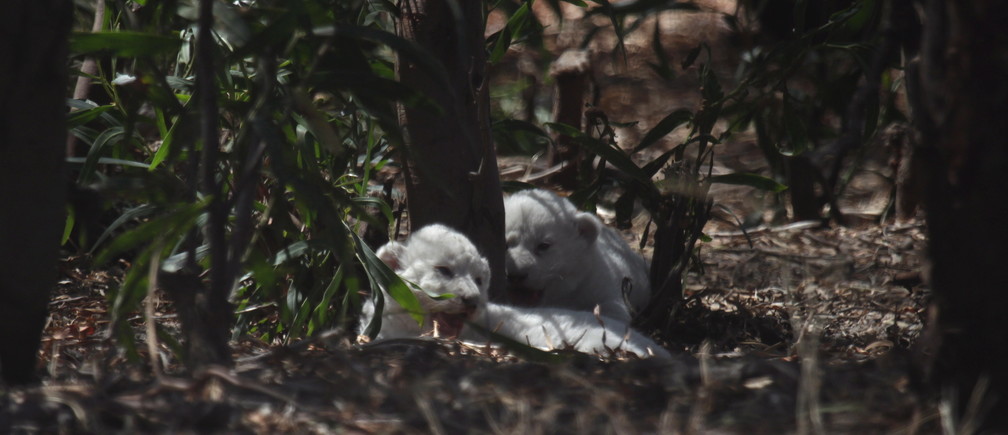Can Africa strike a balance between conservation and economic growth?

Africa's economy keeps growing, but at what cost to wildlife? Image: REUTERS/Mark Wessels
Africa’s narrative today is a different narrative to what it was 10 – 15 years ago. Gone are the days of “Africa, the Dark Continent” or “Africa, the Failed Continent.”
Today’s Africa is an Africa on the move. Africa’s new monikers embrace a more positive view, such as “the Rising Continent” and “Renaissance Africa.” But are we seeing the whole picture?
It is widely reported and celebrated that Africa has turned a corner, with rapid economic growth leading to higher standards of living and a reduction in the percentage of people living in absolute poverty. Although the rates and standards of progress differ around the continent, many African countries have seen annual GDP growth of between 4-6%.
It is perhaps less widely reported or acknowledged that as African economies have grown, many of the continent’s wildlife populations have shrunk. In just over 20 years, Africa’s lion population has declined by half, and today only 20,000 lions are left on the continent. Africa’s elephants, which numbered 1.3 million in the 1970s, have also declined by more than half. Giraffe numbers are also falling, dropping from 140,000 giraffe in 1999 to fewer than 80,000 individuals today.
Some of the declines can be attributed to poaching, as in the case of Africa’s elephants and rhinos. Increasingly, though, habitat loss, conflict with humans and other threats are pushing species closer to extinction and dramatically altering the critical ecosystems on which we rely so heavily.

Source: Save the Rhino
The conventional wisdom is that it is not in the interests of Africa’s leading private sector players to be involved in the conservation of wildlife and wild lands because the needs of humans are too many. This is a false and frankly dangerous dichotomy that prevents us from recognizing how important our wildlife and wild lands are to human survival and prosperity. If we cannot find a balance between nature and economic development, humans will suffer the most. Wildlife numbers are the key, measureable indicators of our ability to find this balance.
As acknowledged in the United Nations’ newly adopted 2030 Agenda for Sustainable Development, social and economic development depends on the sustainable management of our natural resources. By way of industries such as tourism, wildlife contributes to our economies in no small part. And by way of the role they play as “landscape architects,” tree seed dispersers and apex predators, elephants, lions and other wildlife maintain the health and resiliency of our ecosystems.
Africa has extraordinary natural capital of which few other continents can boast, yet this capital is vulnerable. The continent is undergoing a rapid, large-scale and, in some cases, irrevocable transformation. From infrastructure development to expanded trade, much of the change we are seeing promises to bring greater prosperity to the continent. However, when poorly designed and managed, rapid development can come at the expense of both people and wildlife, bypassing our most vulnerable communities, degrading our wild lands and pushing many species to the brink of extinction.
Perhaps a more realistic tactic is for us to take a careful look at how growth is being mapped and planned, and, where necessary, rethink and redesign infrastructure plans so that negative impacts on the environment are mitigated and benefits to local communities enhanced.
It is imperative that governments begin to develop economic and trade development blueprints that explicitly incorporate conservation and the environment into national planning processes. At the continental level, the African Union 2063 development plan which has a strong conservation vision for protecting Africa’s wildlife and natural resources alongside its development vision needs now to secure complete-buy in and implementation support from the continent’s private sector and corporate leaders.
As someone who wholeheartedly champions the economic growth of East Africa, I do not believe that realizing our common goals of enhanced trade, healthy economies and greater prosperity and living standards for all of Africa’s people must come at the expense of our unique natural heritage. More governments and members of the private sector are embracing this thinking. This was very evident in December of last year at the Trade and Development Symposium, which is took place alongside the 10th World Trade Organization Ministerial Conference here in Nairobi. During the symposium there were sessions on addressing the illegal trade in natural resources and Africa’s natural capital alongside sessions on global value chains and profit maximization in Africa. These are topics that TradeMark East Africa was adamant should be on the agenda as we recognise that development and conservation are not separate, but equal parts, which are intertwined and co-dependent.
Conservation is not just about saving animals. It is about the interface between wildlife and humans. The approach of balanced investment, whereby every dollar spent on conservation inside a park or reserve, a dollar is spent outside protected areas on improving human lives, is key to ensuring the people who live near wildlife take the view that it is an important economic asset. As with any asset, there should be systems and safeguards in place to ensure its long-term protection.
Don't miss any update on this topic
Create a free account and access your personalized content collection with our latest publications and analyses.
License and Republishing
World Economic Forum articles may be republished in accordance with the Creative Commons Attribution-NonCommercial-NoDerivatives 4.0 International Public License, and in accordance with our Terms of Use.
The views expressed in this article are those of the author alone and not the World Economic Forum.
Stay up to date:
Future of the Environment
Related topics:
Forum Stories newsletter
Bringing you weekly curated insights and analysis on the global issues that matter.
More on Geographies in DepthSee all
Naoko Tochibayashi
October 30, 2025






